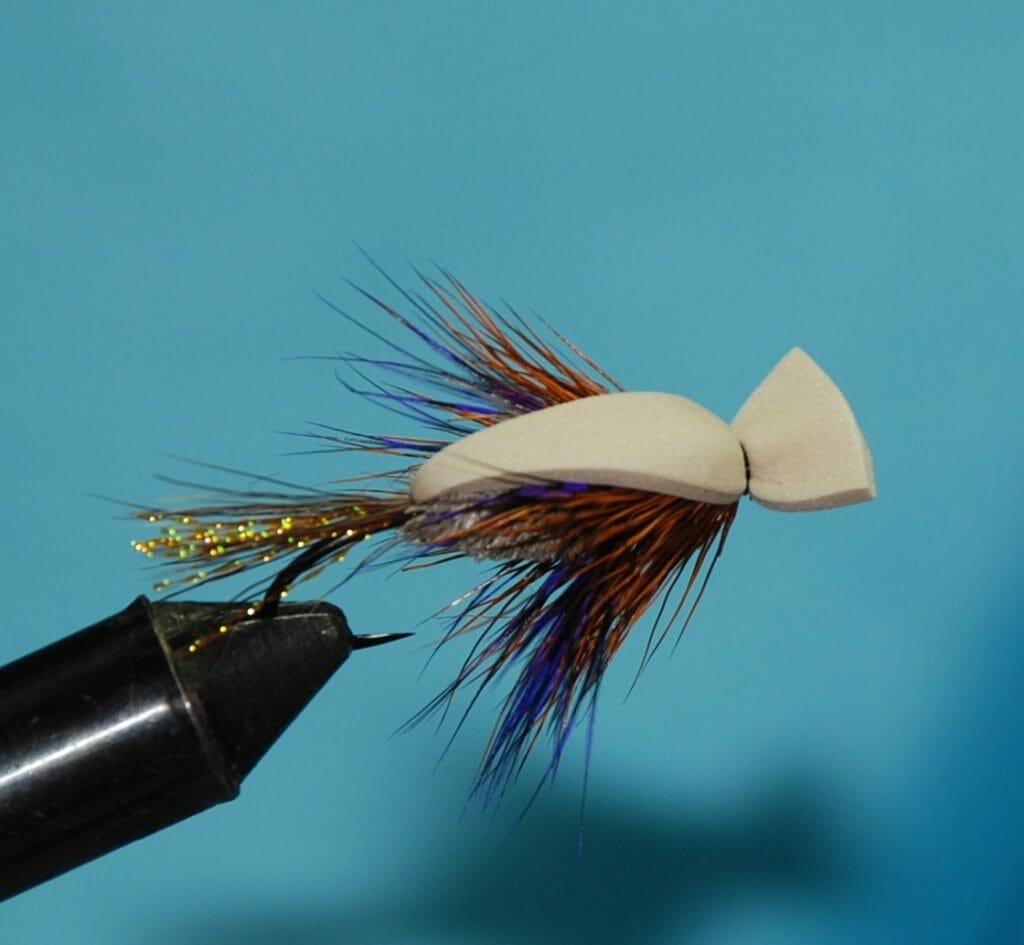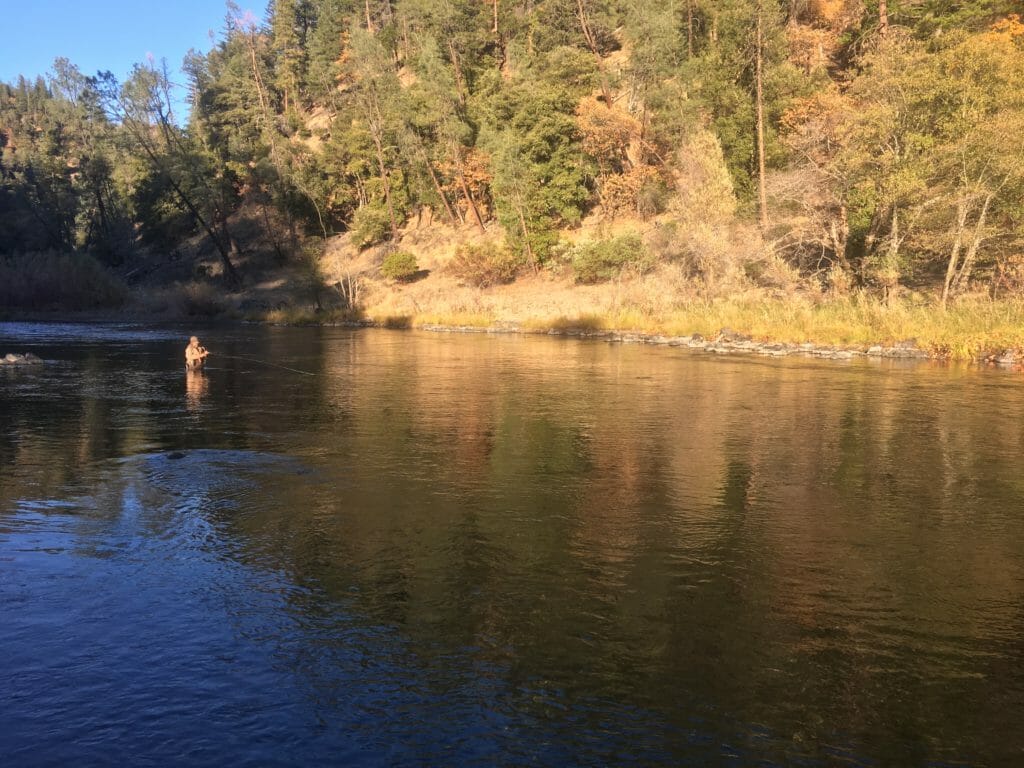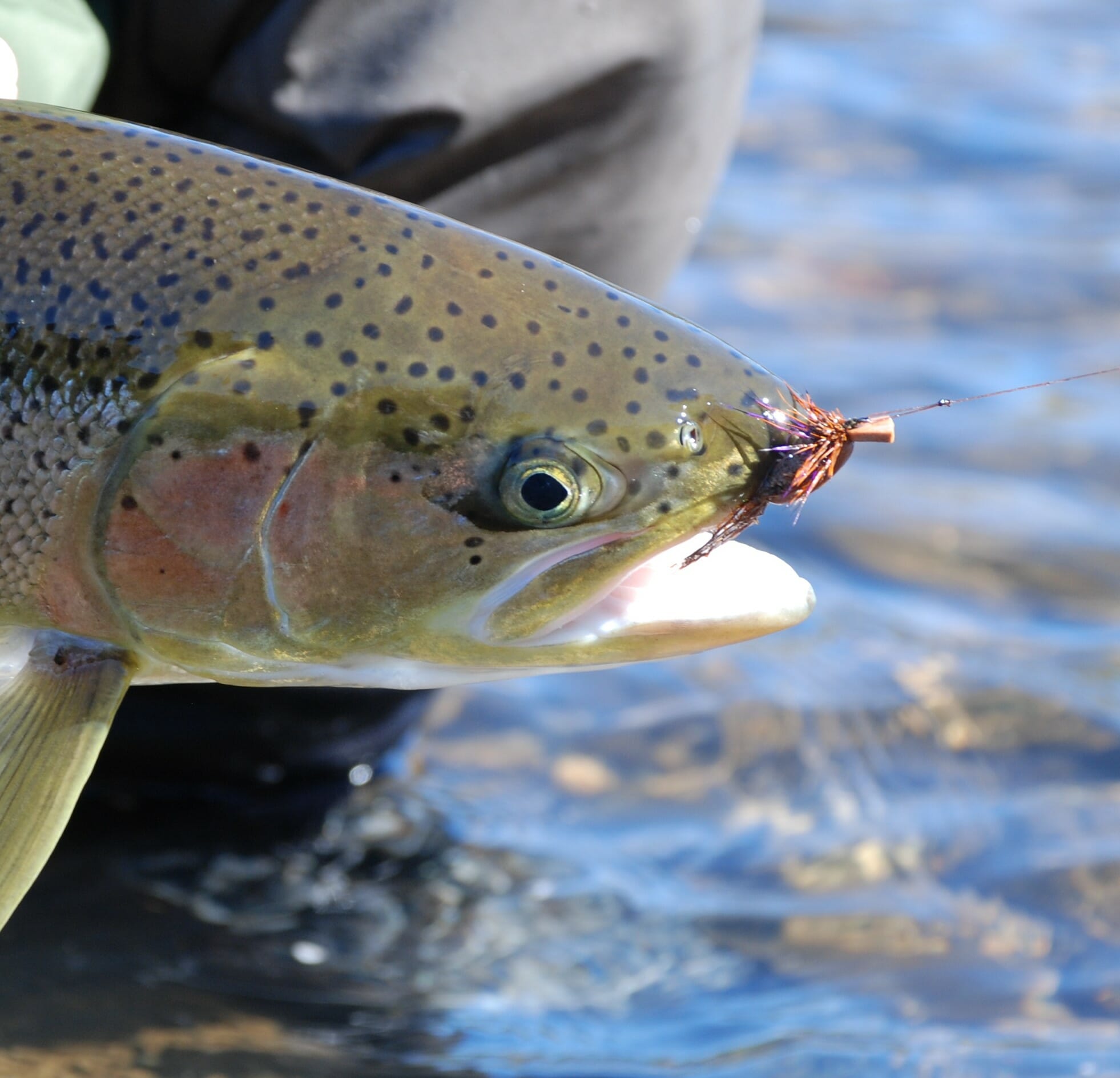If “the tug is the drug” for anglers swinging a fly for wild steelhead, then bringing a surface-snarfing summer steelhead to a skated fly is crack cocaine. There is no bigger adrenaline dump than seeing the glass-smooth surface of a tailout explode as a 10-pound native summer steelhead pounces on your hapless little skater.
“Skaters” are simply flies that are fished under tension (not dead drifted) and “skate” across the surface of steelhead holding water. Many such flies are designed specifically for this angling technique. Other flies are made to skate by various methods of attaching the fly to the leader.
Skating flies derive from the experience of 19th century anglers fishing for Atlantic salmon, who discovered how effective these surface techniques were during the warmer spring, summer and early fall salmon seasons. When steelhead anglers began to experiment with this type of fishing, Atlantic salmon fly patterns such as the Bomber series were some of the first fly patterns tested.
Since then other patterns like Muddler Minnows—and all the spin-offs of that popular streamer fly that incorporate a spun deer hair head (moose, antelope and elk hair also work great)—have also been used to entice steelhead to the surface.
Modern steelhead skaters most often incorporate some type of material designed to lift the pattern and keep it on the surface as its slides across during the swing, under tension creating a “V” wake. Various colors of sheet foam are commonly used to provide this action.
It’s this V wake that is believed to draw the ire of summer steelhead.
If you have spent much time on the water you have probably witnessed an ovipositing October Caddis as she “skates” across the surface, laying her eggs and leaving a V wake in her path, being violently taken by a large trout or steelhead. It seems probable that the V wake of the skated steelhead fly prompt the same reaction from the fish. Whatever the reason, the fact is, steelhead will happily and greedily come to the surface to take flies presented under tension, skating across the surface.
Equipment and tackle
Over the years I’ve presented skaters to steelhead by using just about every kind of fly rod and line. Floating lines are a must and any rod that allows you to effectively turn over flies that sometimes feel like you’re casting a bedroom pillow will work. Double taper or “rocket” taper lines work well; so do triangle tapers and other lines that work for both traditional overhead casting or spey casting.

When fishing a spey rod, I prefer shorter and lighter rods. My favorite is a 12’6” 5-6 wt that throws a 350-550 gm. full floating line or floating line-poly leader combo. If I’m fishing cane, I have an 8’6” “Pinky Gillum” (fast taper) 7 wt that I love. I string this twig up with a hand-woven, double taper Torenzio silk fly line that I dress each day before I hit the water. My favorite modern single hander for fishing skaters is a 10’ 7 wt with a full floating Air-Flo line.
All of my rod/line combos end with a 10’ tapered leader and 1X to 3X tippet. The less aerodynamic patterns get the heavier tippet to help turn them over. My personal preference is mono—mostly because I’m old, and mono allows me to tie more consistent knots than fluorocarbon.
Good skater water
I’ve had summer steelhead attack skaters in every water type—heads of pools, pocket water, riffles, buckets, around rocks, boulders, logs and ledges and throughout tailout sections. I have had steelhead come off the bottom in a dozen feet of water to attack surface flies. And I have had steelhead take flies off the surface in all water speeds, from crazy fast to frog water.
My favorite water type to fish a skater though is probably tailouts with a moderate speed (say walking speed or maybe a little slower) and depths of two to five feet. Throw in a large boulder or rock ledge for cover, and you’ve got some GREAT skater water!

Tailouts generally provide a fairly constant current speed that allows the fly to swing across with a consistent motion and less drag. In my experience a steady, constant speed of motion with the skated fly seems to be most attractive to steelhead.
The technique
All of my swung fly techniques for steelhead start the same way, including fishing skaters. I start with a short line, often no more than a rod length, especially if I know I’m the first angler down the run that day.
Steelhead will conserve energy whenever possible—if they don’t have to work hard, they won’t. If lying in the soft currents along shore, near faster current seams, allow them to rest comfortably and avoid detection by predators, that’s where they’ll be.
So I start short to be certain I’m covering the close-in lies, then gradually lengthen my line a couple of feet at a time as I make each new cast and presentation, until I’m completely coving all the likely holding water or I’ve reached my comfortable casting distance. Then I begin to work my way methodically down the run, two or three steps at a time.
The excitement factor is one of the main reasons I only fish a skater all summer long. This technique is so visual—seeing aggressive steelhead come to your fly and boil on it, or at the last second refuse to take it, or actually try to eat the fly and miss it, will get any angler’s pulse pounding.
And skating flies also allows me to identify aggressive steelhead “players,” even if they won’t actually take the skater, then use several different “come-back” techniques that can result in a solid hook-up.
There is no more exciting, productive, and adrenaline-soaked way to encounter wild steelhead on the fly than by fishing a surface-skating fly! In part 2, I’ll cover those hand-trembling “comeback” techniques that you can use after getting a steelhead player good and riled—but not hooked—by a skated fly.
This post is the first in a two-part series on fishing skating flies for steelhead from TU’s Dean Finnerty. Finnerty, whose home water is Oregon’s Umpqua River, has worked as a salmon and steelhead fishing guide for many years and had a long and distinguished career in law enforcement before coming to Trout Unlimited, where he is now northwest regional director for our Sportsmen’s Conservation Project as well as director of our Wild Steelhead Initiative.


